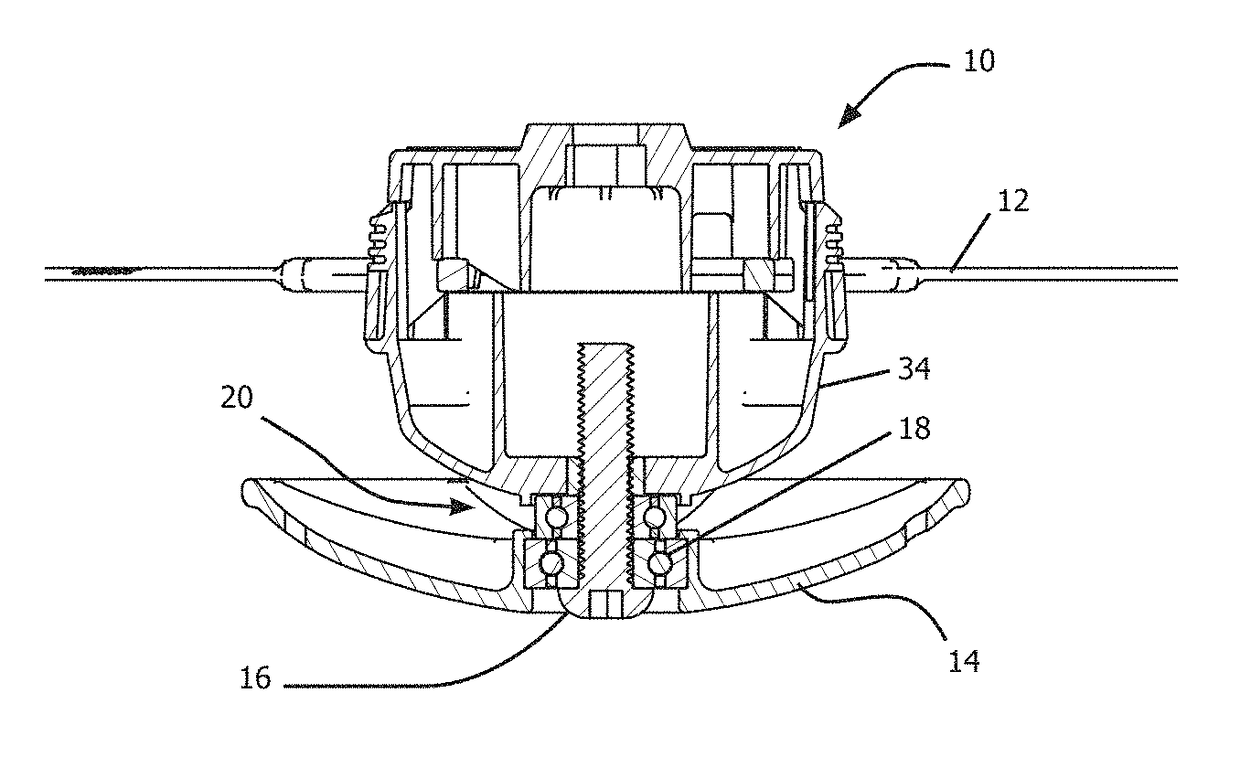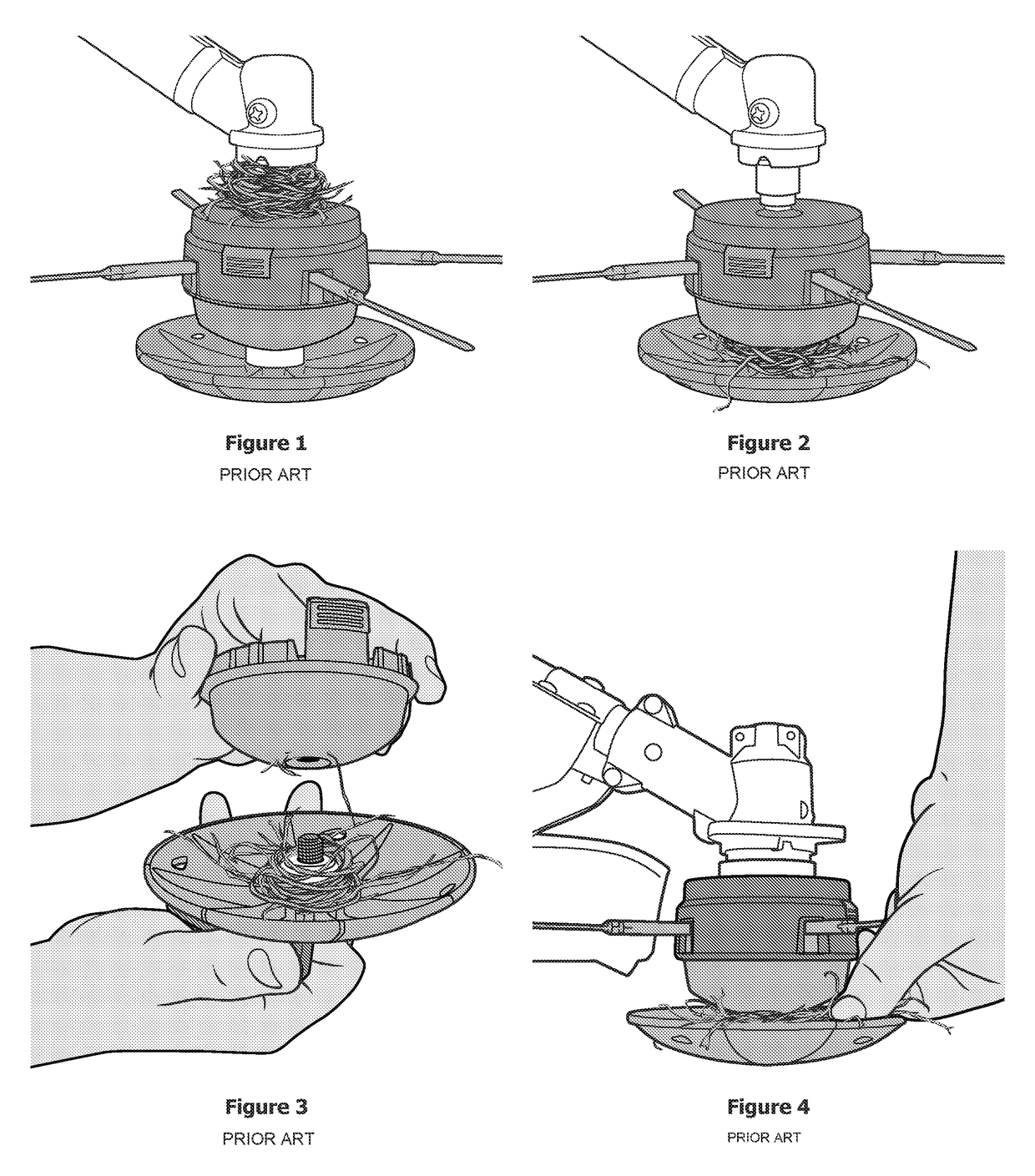Anti-wind/anti-wrapping assembly for trimmers
a technology of anti-wind and anti-wrapping, which is applied in the direction of mowers, agricultural tools and machines, agriculture, etc., can solve the problems of destroying the system, increasing undesirable and destructive forces, and increasing vibratory forces for operators trying to control the system, etc., to achieve the effect of easy removal
- Summary
- Abstract
- Description
- Claims
- Application Information
AI Technical Summary
Benefits of technology
Problems solved by technology
Method used
Image
Examples
Embodiment Construction
[0026]With reference to FIGS. 5-7, a first exemplary application of the anti-winding assembly will be described in conjunction with a trimmer that incorporates a glider disk such as the glider disk described in the noted co-pending U.S. patent application. A trimmer head 10 is typically secured to a rotatable arbor (not shown in FIG. 5) and supports one or more cutting lines 12. The cutting lines 12 shown in the figures are exemplary molded lines with aerodynamic cross-sections available from Aero-Flex Technologies of Rock Hill, S.C. The cutting lines may also be common monofilament cutting line.
[0027]The glider disk 14 is attached to the trimmer head 10 via a bolt 16 or the like through a glider bearing 18. The anti-winding assembly 20 is positioned in the gap between the glider disk 14 and the trimmer head 10.
[0028]The anti-winding assembly 20 includes a bearing 22 positionable between the trimmer head 10 and the glider disk 14. The bearing includes a freely rotating outer race 24...
PUM
 Login to View More
Login to View More Abstract
Description
Claims
Application Information
 Login to View More
Login to View More - R&D
- Intellectual Property
- Life Sciences
- Materials
- Tech Scout
- Unparalleled Data Quality
- Higher Quality Content
- 60% Fewer Hallucinations
Browse by: Latest US Patents, China's latest patents, Technical Efficacy Thesaurus, Application Domain, Technology Topic, Popular Technical Reports.
© 2025 PatSnap. All rights reserved.Legal|Privacy policy|Modern Slavery Act Transparency Statement|Sitemap|About US| Contact US: help@patsnap.com



